- HOME
- For Patients
- Cervical spondylosis and ossified posterior longitudinal ligaments
Cervical spondylosis and ossified posterior longitudinal ligaments
- About cervical spondylosis and ossified posterior longitudinal ligaments
- Symptom of cervical spondylosis and ossified posterior longitudinal ligaments
- Treatment of cervical spondylosis and ossified posterior longitudinal ligaments
Treatment of cervical spondylosis and ossified posterior longitudinal ligaments
If the symptoms are mild, they can simply be kept under observation. Treatment is required if the symptoms are severe or becoming worse, and particularly if there is any difficulty in walking, but the only curative treatment is to relieve the pressure on the spinal cord by surgery. This surgery requires extremely delicate operations, but it can be performed safely with good results by using a surgical microscope to provide a clear, enlarged view of the surgical field during the procedure.
Broadly speaking, the surgery can be carried out from either the front (anterior) or the back (posterior) of the neck. The anterior approach is used when only one or two places are compressed and the pressure is not very severe, while the posterior approach is usually used when three or more places are compressed or if the pressure is severe.
Anterior decompression
In this operation, the lesion compressing the spinal cord or nerve root is removed directly via the anterior approach to relieve the pressure. Compared with the posterior approach, it may provide better symptom relief by directly removing the lesion causing the pressure.
In this approach, the intervertebral disk at the level of the lesion is removed, and at the end of the operation, the space left by its removal must be filled with bone or a metal screw or similar device to stabilize the spine. This is why it is not often used if three or more locations are compressed.
This procedure requires delicate operations in a small operating field. The use of a surgical microscope is therefore essential. On the other hand, it is minimally invasive and imposes little burden on the patient, enabling a swift return to normal life.
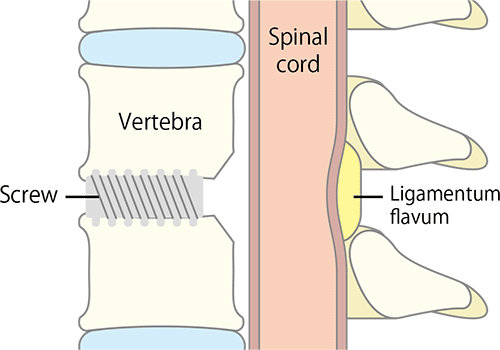
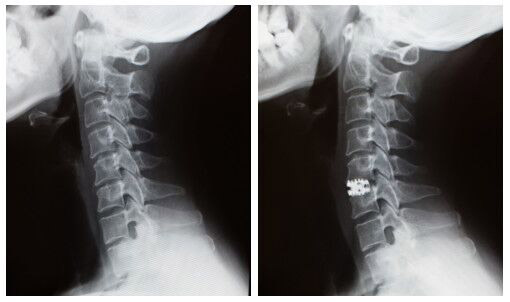
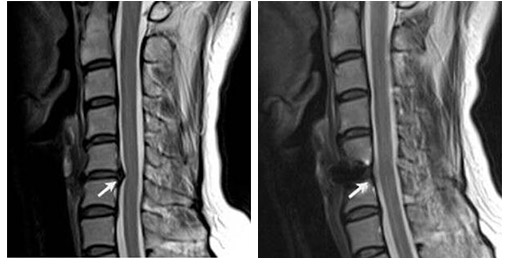
Laminoplasty
In the posterior approach, the arch-shaped bone (the vertebral arch) behind the spinal cord is opened up to relieve the pressure on the spinal cord. This method can be used even when three or more locations are compressed, involves comparatively little invasion, and can improve symptoms.
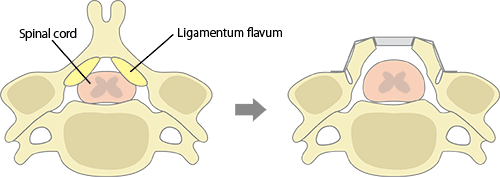
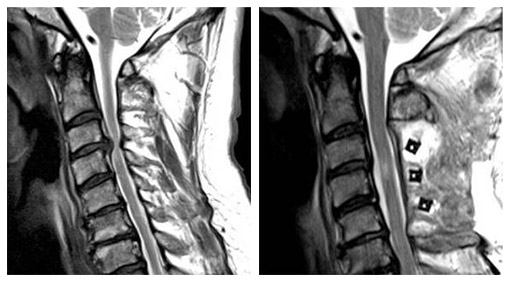
Prognosis
If symptoms are progressing, it is important to consider the timing of surgery carefully. Basically, if surgery is carried out while the symptoms are still mild, a good recovery can be expected. Once they have progressed beyond a certain point, however, patients may not make a complete recovery even after surgery.
Doctor's Info Han Soo Chang







